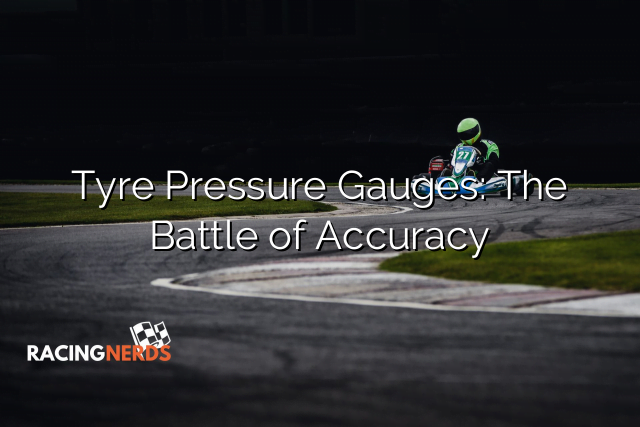
In the realm of automotive maintenance, the accuracy of tyre pressure gauges is a subject of considerable debate among enthusiasts and professionals alike. The precision with which these instruments measure tyre pressure can have a profound impact on vehicle performance, fuel efficiency, and safety.
As such, the industry presents a dichotomy between analog and digital gauges, each claiming superiority in certain aspects. Analog units, with their simplicity and direct readout, offer a sense of traditional reliability, while the digital counterparts boast advancements in sensor technology and user-friendly interfaces.
Yet, questions linger regarding the true fidelity of these measurements under varying operational conditions and the potential for discrepancies over time. As we examine the intricate details of each gauge type, a broader question emerges: in the quest for the most accurate tyre pressure readings, which technology will ultimately prevail, and under what circumstances might one outperform the other?
The analog tyre pressure gauge, a staple tool for budget-conscious motorists and mechanics, offers a straightforward approach to tyre maintenance, balancing cost-effectiveness with simplicity of use. These devices capitalize on the benefits of hands-on experience, fostering a user’s understanding of their vehicle’s needs through direct interaction.
However, analog gauge limitations must be acknowledged; the susceptibility of their mechanical components to damage can impair accuracy, rendering measurements unreliable. Furthermore, exposure to extreme temperatures can affect their performance, necessitating careful handling and storage.
While brands such as Kartech, Longacre, and Intercomp provide quality analog gauges, precision can be compromised if the gauge is mishandled or subjected to adverse conditions, emphasizing the importance of meticulous use and periodical verification of the gauge’s calibration.
While analog tyre pressure gauges present a cost-effective solution with a hands-on approach, digital gauges mark a significant advancement in accuracy and functionality for tyre maintenance. Digital gauge technology is redefining the standards of pressure measurement with its precision-engineered sensors and microprocessors. Unlike their analog counterparts, these digital devices are less susceptible to damage from vibration or temperature variations, ensuring consistent performance.
| Feature | Analog Gauge | Digital Gauge |
|---|---|---|
| Accuracy | Less precise | Highly accurate |
| Durability | Varies with usage | Robust construction |
| Technological Edge | Simple mechanics | Advanced electronics |
While the benefits of analog gauges include affordability and simplicity, digital tyre pressure gauges offer a leap in reliability. Technicians can now achieve meticulous calibration, essential for the demanding conditions of motorsports and safety-critical applications.
When comparing the prices of tyre pressure gauges, it is essential to consider not only the initial purchase cost but also the potential long-term savings in maintenance and accuracy that may justify a higher upfront investment for digital models.
Analog gauges, typically ranging from $30 to $70, are cost-effective for immediate needs. However, their vulnerability to physical damage can lead to frequent recalibrations or replacements, diminishing their cost effectiveness over time.
Digital gauges, while more expensive initially, offer superior performance consistency and longevity due to their robust construction and lesser need for recalibration.
Performance comparison must also account for the added value digital gauges provide through advanced features like customizable units and data storage, potentially offsetting the higher purchase price with their precision and adaptability in professional settings.
Considering the long-term cost implications of tyre pressure gauges, it is crucial to examine their durability and the associated maintenance requirements to ensure sustained accuracy and performance. The longevity and care of these instruments are pivotal to their reliability. A gauge’s resilience to environmental factors and rough handling determines its lifespan, while regular maintenance can preempt common issues.
Common maintenance issues include clogged or worn valves, battery corrosion in digital gauges, and display malfunctions, all of which can be mitigated with diligent care and routine check-ups.
Ensuring the accuracy and precision of tyre pressure gauges is paramount, as even small deviations can lead to suboptimal vehicle performance and increased tire wear. The importance of calibration in these instruments cannot be overstated.
A well-calibrated gauge ensures that the readings are consistently close to the true pressure of the tyre, allowing for reliable adjustments and maintenance.
Furthermore, the impact of temperature variations on gauge readings is significant. Temperature can affect the density and pressure of the air within the tyre as well as the mechanical and electronic components of the gauge itself.
Therefore, high-quality gauges are designed and tested to provide accurate readings across a range of temperatures, ensuring that tyres are properly inflated regardless of environmental conditions.
Recognizing the importance of accuracy and precision in tyre pressure gauges, it is equally vital to examine the customizable features that enhance user experience and functionality. Advanced digital gauges often provide options that allow for a more tailored approach to tyre maintenance, enabling users to optimize performance based on specific requirements.
Noteworthy customizable features include:
These features not only contribute to the longevity of the device but also support comprehensive data analysis, facilitating informed decisions that can impact fuel economy, tyre wear, and overall vehicle safety.
Selecting the appropriate tyre pressure gauge necessitates a careful analysis of one’s specific needs, preferences, and the conditions in which the device will be utilized. Factors to consider include accuracy requirements, environmental resilience, and the frequency of use.
Analog gauges are affordable, offering a tactile experience favored in moderate climates. However, their susceptibility to damage and potentially less precise readings weigh against them.
Conversely, digital gauges provide enhanced accuracy, durability, and features like data storage, albeit at a higher cost and with reliance on battery power.
Each type presents a distinct set of pros and cons, emphasizing the importance of aligning the gauge’s characteristics with the user’s specific application to ensure optimal performance and reliability.
Temperature variations can induce calibration drift in both analog and digital tyre pressure gauges. Digital gauges often feature temperature compensation, reducing the impact of temperature changes on measurement accuracy over time.
Like a knight’s constant sharpening of his sword, frequent usage of a tyre pressure gauge can lead to valve wear. However, both analog and digital gauges, when used properly, seldom compromise valve durability.
Both analog and digital tyre pressure gauges may yield inaccurate readings under pressure extremes or when subjected to mechanical shock, which can compromise their internal components or calibration.
The disposal of digital gauges contributes to electronic waste, posing ecological hazards. Recycling challenges include material recovery and processing. Programs for electronics recycling mitigate impact but require expansion to encompass automotive tools.
In the sustainability arena, material longevity and production energy converge, with analog gauges often taking the lead due to simpler manufacturing and less resource-intensive components than their digital counterparts.
In the perennial quest for tire pressure perfection, the humble analog gauge endures, steadfast in its mechanical purity. Its digital descendant, on the other hand, parades precision and pomp. The irony lies in the relentless march of technology, promising infallibility, yet at the mercy of a depleted battery.
The choice between these two types of gauges is veiled in the guise of simplicity versus sophistication. It ultimately hinges on the user’s allegiance to tradition or the embrace of electronic exactitude in the theater of tire maintenance.

